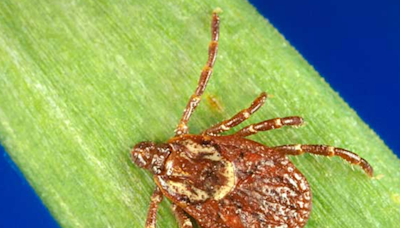Search results
- DictionaryLyme dis·ease/ˈlīm dəˌzēz/
noun
- 1. an inflammatory disease characterized at first by a rash, headache, fever, and chills, and later by possible arthritis and neurological and cardiac disorders, caused by bacteria that are transmitted by ticks.
Feb 10, 2023 · If you live where Lyme disease is common, the rash might be enough for a diagnosis. A diagnosis usually depends on the following: A review of all signs and symptoms. A history of known or possible exposure to ticks. Blood tests to find disease-fighting antibodies to the bacteria.
Lyme disease, also known as Lyme borreliosis, is a vector-borne disease caused by Borrelia bacteria, which are spread by ticks in the genus Ixodes. The most common sign of infection is an expanding red rash, known as erythema migrans (EM), which appears at the site of the tick bite about a week afterwards.
Feb 28, 2024 · Lyme disease is an infectious disease that's transmitted to humans through tick bites. Learn how Lyme disease is diagnosed and treated, and learn how to prevent tick bites.
Jan 15, 2021 · Untreated Lyme disease can produce a wide range of symptoms, depending on the stage of infection. These include fever, rash, facial paralysis, and arthritis. Early Signs and Symptoms (3 to 30 Days After Tick Bite)
Jan 27, 2020 · Lyme disease is a bacterial infection you get from the bite of an infected tick. At first, Lyme disease usually causes symptoms such as a rash, fever, headache, and fatigue. But if it is not treated early, the infection can spread to your joints, heart, and nervous system. Prompt treatment can help you recover quickly.
Lyme disease is a bacterial infection that often causes a rash and mild symptoms that include fever, headache, and fatigue, which can be treated with antibiotics. Lyme disease can become serious, especially if not treated early.
Lyme disease is most frequently reported from the upper midwestern, northeastern, and mid-Atlantic states where it is spread by Ixodes scapularis ticks. Some cases are also reported from northern California, Oregon, and Washington, where it is spread by Ixodes pacificus ticks.

